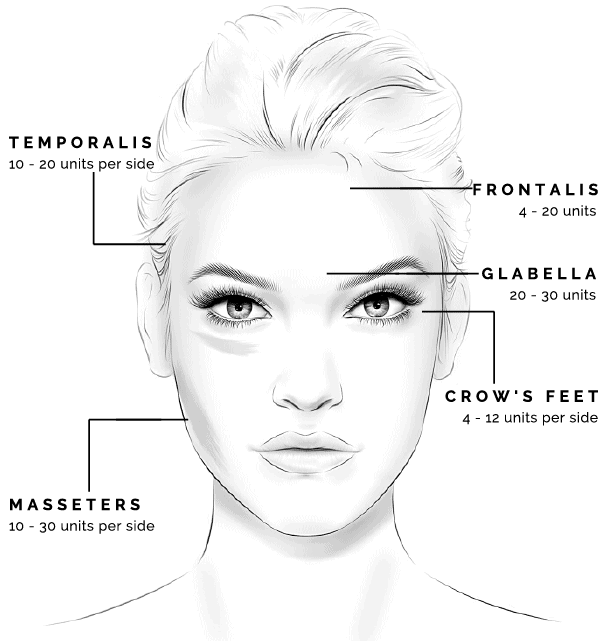Two-Phase Treatment
Two-phase orthodontic treatment for kids involves early intervention to straighten teeth while also establishing a good bite. Early orthodontic treatment can address issues like early or late loss of baby teeth, crowded or misaligned teeth, overbites, underbites, crossbites, and other similar oral issues.
Phase One
Before all a child’s permanent teeth erupt (6-10 years old), phase one orthodontic therapy, also known as an early interceptive treatment, is performed. Pediatric orthodontists typically suggest this kind of therapy when there is a likelihood the patient will experience a moderate or severe orthodontic issue early in life and waiting is not advised. However, Phase One therapy is also not advised unless the orthodontist is confident that conducting this technique will significantly improve the patient’s results.
Phase One orthodontic treatment’s primary goal is to provide enough space for permanent teeth, lowering the likelihood of overcrowding, which invariably results in crooked teeth. Phase One also addresses problems with the jaw or bite, such as crossbites and underbites. Therefore, this early orthodontic therapy can be beneficial in situations where the child’s upper or lower jaw is not developing at the desired rate. Early treatment can often prevent additional dental trauma, reduce the possibility of permanent tooth removal, and even avert jaw surgery. If such oral problems are not addressed, adult braces may be required. Phase One procedures typically take between 9 and 18 months to complete. As the remaining teeth come in, the child is then given retainers, which are evaluated every 4 to 6 months.
Common Phase One treatments can include:
- Invisalign
- Specialized retainers
- Headgear
- Limited phase of braces (select teeth)
- Space maintainers
- Functional appliances
- Expansion appliances

Phase Two
Phase Two is what parents are familiar with when considering orthodontic treatment. When braces are attached to either the top or lower teeth, Phase Two begins. In addition to filling in gaps and straightening out misaligned teeth, this phase also addresses issues with an overbite or underbite. Phase Two normally starts when a child is 11 or 12. Typically, this stage of orthodontic treatment lasts between 12 to 20 months, however, every case is unique and varies depending on the individual. While some kids may need to wear braces for up to four years, others with less severe problems might just need to do so for a year or so.
However, parents typically wonder if a two-phase treatment is necessary or whether they may just start Phase Two treatment plans once their child reaches the appropriate age. In all honesty, there is no correct response to this question because each child’s orthodontic treatment is unique, and the best way to decide is to take advantage of our free orthodontic consultation. To ensure that you are fully educated and ultimately make the greatest choice for your child, your orthodontist is the ideal person to assist you in understanding all potential options.
Common issues that may require a two-phase treatment approach include:
- Early infant teeth loss (before age 5)
- Issues with biting or chewing
- Thumb-sucking (after age 5)
- A crossbite or if the teeth don’t line up properly
- Around age 7 or 8 teeth start to crowd
- Upper or lower teeth that protrude
For additional information on two-phase orthodontic treatment, request a consultation with our team. Your child’s smile is important to us and we want to ensure they are set up for a lifetime of healthy, confident smiles.
Dentofacial Orthopedics
St. Louis Dentofacial Orthopedics specialists like Dr. Otto undergo additional schooling during a 2-3 year residency program. There are 9 specialties sanctioned by the American Dental Association. Some areas of specialty you are likely familiar with are Pediatric Dentistry (dentistry for children), Periodontics (dentistry focusing on the gums), and Oral Surgery.
One of the nine specialties is “Orthodontics and Dentofacial Orthopedics.” “Dentofacial” is “teeth” plus “face” while “ortho” means “straight” and “pedic” is from the Greek for “child.”
What Is Dentofacial Orthopedics?
Essentially, while orthodontics entails the management of tooth movement, dentofacial orthopedics involves the guidance of facial growth and development, which occurs largely during childhood. In both cases, appliances are frequently used — the more familiar braces for orthodontics, and other specialized appliances like headgear and expanders depending on what facial abnormalities are present. Sometimes orthopedic treatment may precede conventional braces, but often the two are accomplished at the same time. So if your child gets braces and headgear, they are undergoing orthodontics and dentofacial orthopedics!
Because Dr. Otto is skilled in both areas, she is able to diagnose any misalignments in the teeth and jaw as well as the facial structure and can devise a treatment plan that integrates both orthodontic and dentofacial orthopedic treatments.

Surgical Orthodontics
Just as orthodontics repositions teeth, surgical orthodontics (also known as orthognathic surgery) corrects jaw irregularities to improve the patient’s ability to chew, speak, and breathe and for improved facial appearances. In other words, surgical orthodontics straightens your jaw. Moving the jaws also moves the teeth, so braces are always performed in conjunction with jaw correction. This helps make sure teeth are in their proper positions after surgery.
Who Needs Surgical Orthodontics?
Your orthodontist will consider surgical orthodontic treatment for non-growing adult patients with improper bites and those with facial aesthetic concerns. Jaw growth is usually completed by age 16 for girls and 18 for boys. All growth must be completed before jaw surgery can be performed. However, the pre-surgical tooth movements can begin 1 to 2 years prior to these ages.
How Does It Work?
During your orthodontic treatment, which usually lasts 6–18 months, you wear braces and will visit your orthodontist for scheduled adjustments to your braces. As your teeth move with the braces, you may think that your bite is getting worse rather than better. However, when your jaws are placed into proper alignment during orthognathic surgery, the teeth will then fit into their proper positions.
Surgery is performed in the hospital with an oral surgeon and can take several hours, depending on the amount and type of surgery needed. In lower jaw surgery, the jawbone behind the teeth is separated and the tooth-bearing portion is moved forward or backward, as needed. In upper jaw surgery, the jaw can be repositioned forward or backward, or the jaw can be raised or lowered. Certain movements may require the jaws to be separated, with bone added/removed to achieve the proper alignment and stability. Other facial bones that contribute to alignment may also be repositioned or augmented.
When you have completed surgery, you should be able to return to school or work within 2 weeks. After the necessary healing time (about 4–8 weeks), your orthodontist “fine-tunes” your bite. In most cases, braces are removed within 6–12 months following surgery. After your braces are removed, you will wear a retainer to maintain your beautiful new smile.
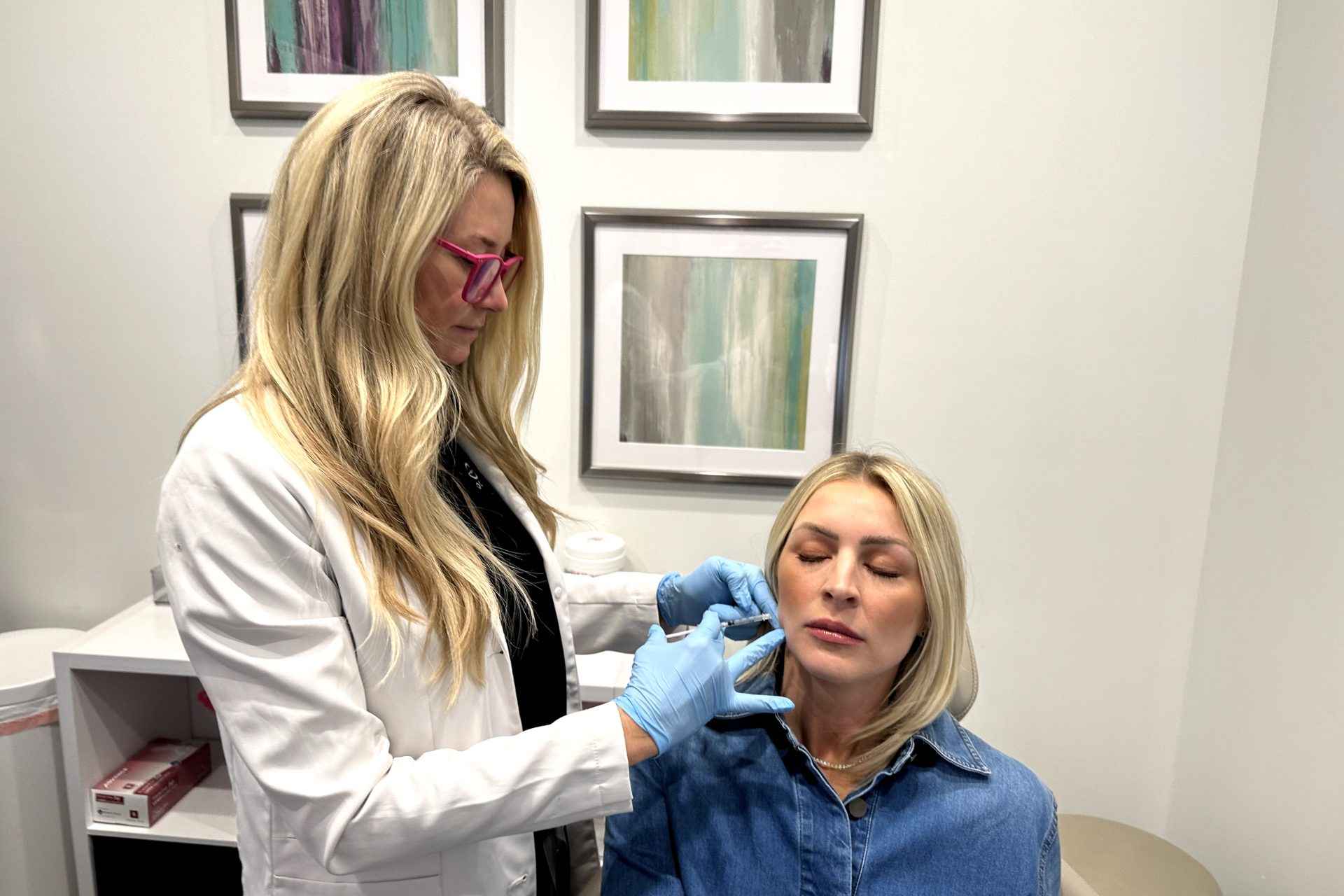
TMJ/TMD Treatment
Temporomandibular Disorder, commonly known as TMD, is a chronic, multifaceted musculoskeletal condition affecting the temporomandibular joint (TMJ) — the hinge connecting your jaw to your skull. This complex disorder can cause discomfort in the jaw, facial muscles, ears, and even both sides of the head. It’s estimated that between 5-12% of adults will experience TMD at some point.
The causes of TMD are diverse, ranging from lifestyle factors such as stress and habitual gum chewing, to physical triggers like teeth grinding (bruxism), or whiplash injuries. Age also plays a role, as the natural weakening of jaw muscles and reduced cartilage flexibility can contribute to TMD development. Regardless of its origin, it’s crucial to diagnose and treat TMD promptly to prevent further deterioration of the jaw joint and enhance quality of life.
At Otto Orthodontics, we offer comprehensive treatment plans for TMD patients. Our approach may involve physical and occupational therapy, medication, or, in severe cases, surgical intervention. We also advocate for lifestyle modifications, including stress management strategies and dietary changes, to alleviate symptoms.
Recognizing TMD: Key Symptoms
TMD manifests through a range of symptoms that can significantly impact comfort and daily functioning. These include:
- Jaw, face, and neck pain
- Difficulty in opening or closing the mouth
- Audible clicking sounds when the jaw moves
- Dizziness and ear-ringing
These symptoms can occur independently or in combination. TMD may also present with jaw muscle tenderness and restricted jaw movement. Additional signs may include issues with teeth grinding, a sense that your upper and lower teeth aren’t aligning correctly, sensitivity to cold foods, speech difficulties, popping sounds upon mouth opening, and alterations in bite patterns.
Depending on its severity, TMD can greatly impede everyday activities, disrupt sleep, and complicate eating. In severe cases, persistent headaches, jaw locking, or dislocation may occur, further underlining the need for professional medical intervention. If you’re experiencing these symptoms, our expert orthodontists can provide a thorough diagnosis and effective treatment plan tailored to your needs.
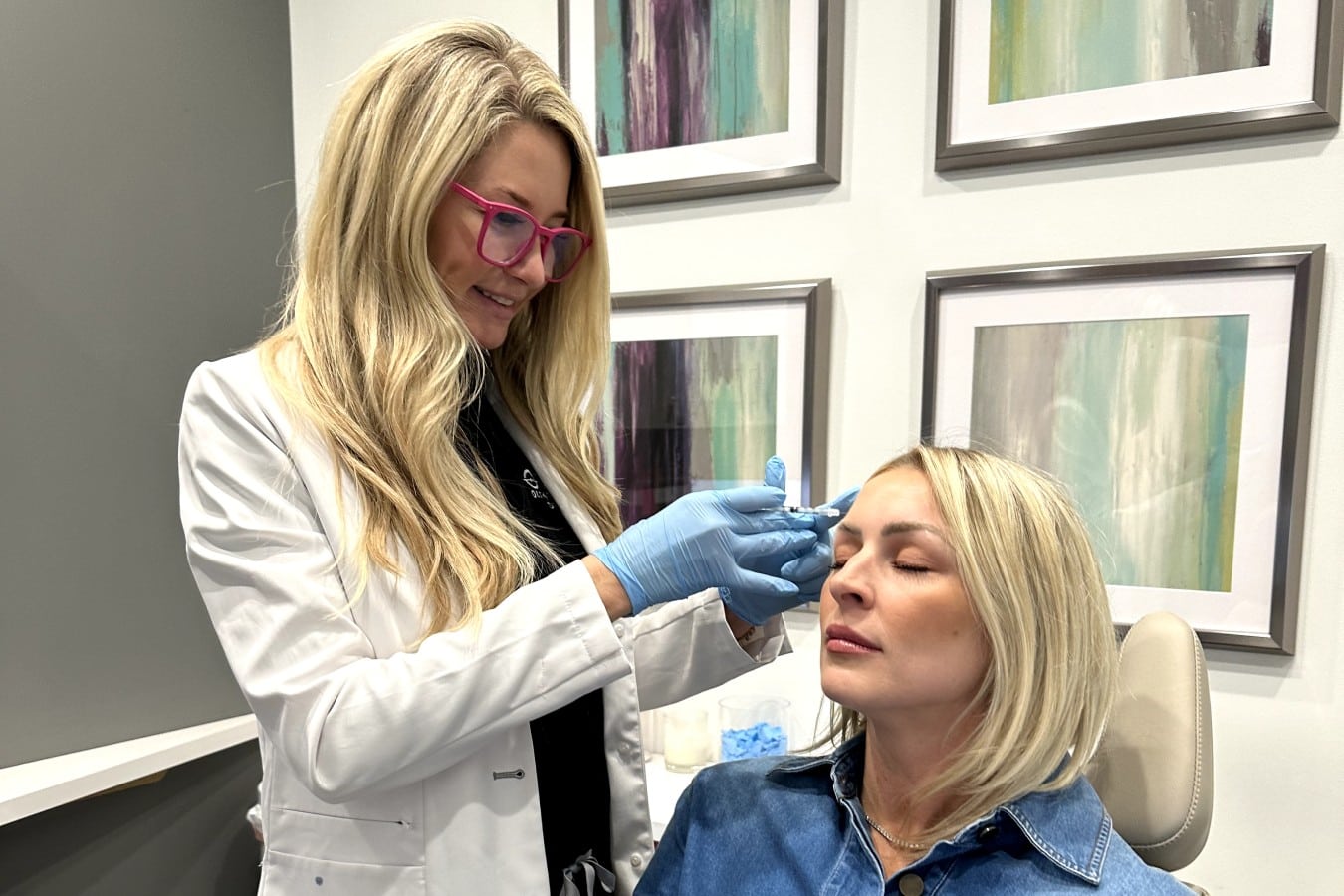
Botox
Botox, or Botulinum toxin, is a highly purified preparation of botulinum toxin A. It acts by blocking the transmission of nerve impulses to muscles and relaxing the muscles by paralyzing them. Injecting the Botulinum toxin into the muscles temporarily reduces its activity by blocking the transmitters between the motor nerves. Botox is injected, in very small amounts, into specific muscles, as a treatment for a variety of applications.
Most sessions take only 5 to 10 minutes, during which time a fine needle is used to inject small amounts of Botox into key areas of the head and neck area.
What Type Of Results Can I Expect From Botox?
Botox improves the appearance of frown lines, forehead creases, crow’s feet, gummy smiles, and smoker’s lines. Botox results will reach full efficacy in 2 weeks post-injection. Everyone metabolizes Botox differently, so results will vary but typically last between 3-4 months. After each re-treatment, fewer units may be required to produce similar results, and lines will return as less severe since the muscles have already been relaxed.
Botox is also used in a wide variety of treatments, ranging from cosmetic procedures to pain management, particularly for pain caused by TMJ disorders, and bruxism, (teeth grinding and clenching). For masseter injections, you may notice slimming of the lower face if you have a wide lower face due to strong masseter muscles from clenching or grinding.
How Many Units Will I Need?
Botox costs $12 per unit. To get an estimate of how many units of Botox you may need, check out our guide below, or view our Botox Menu here.
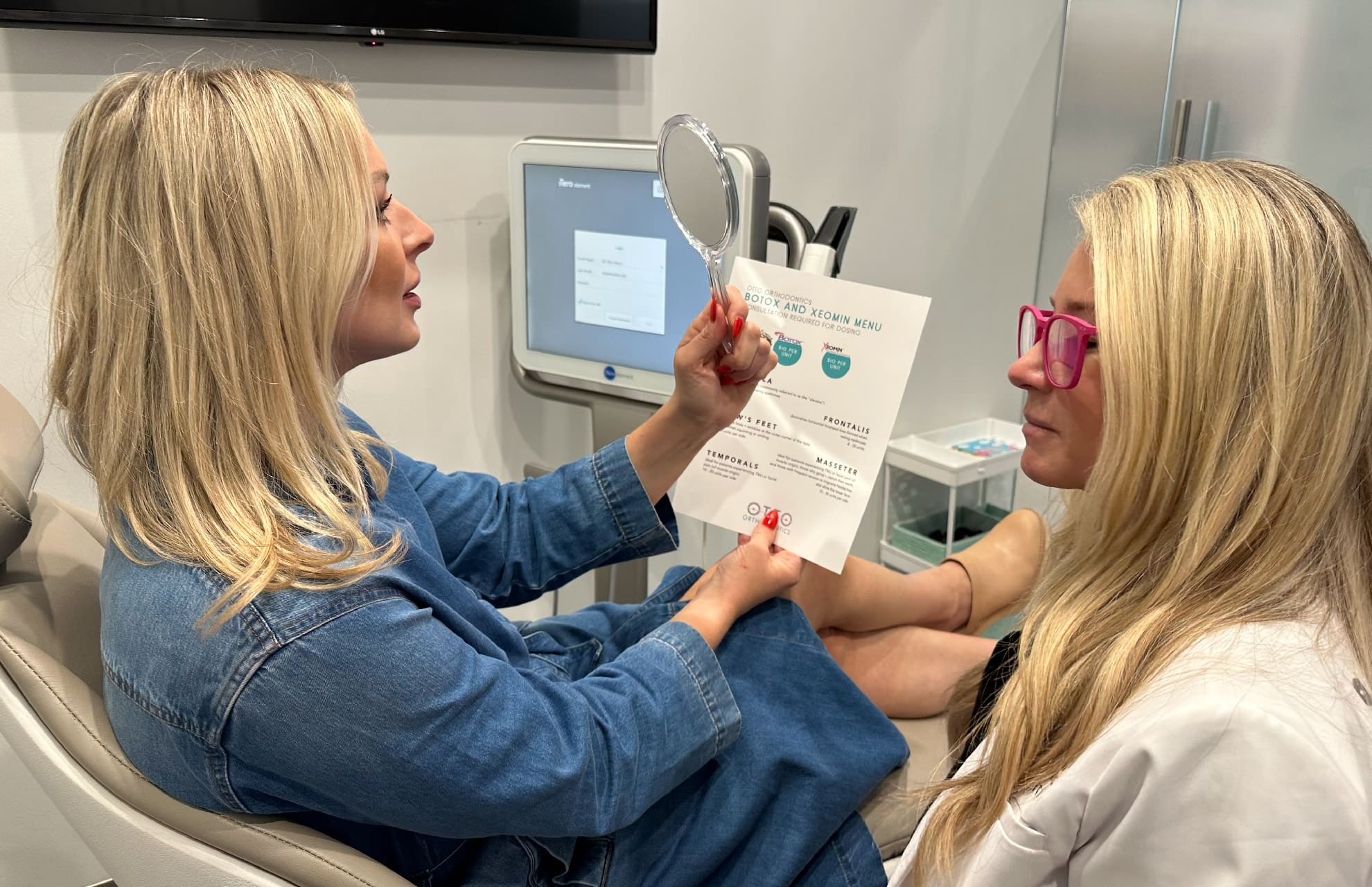
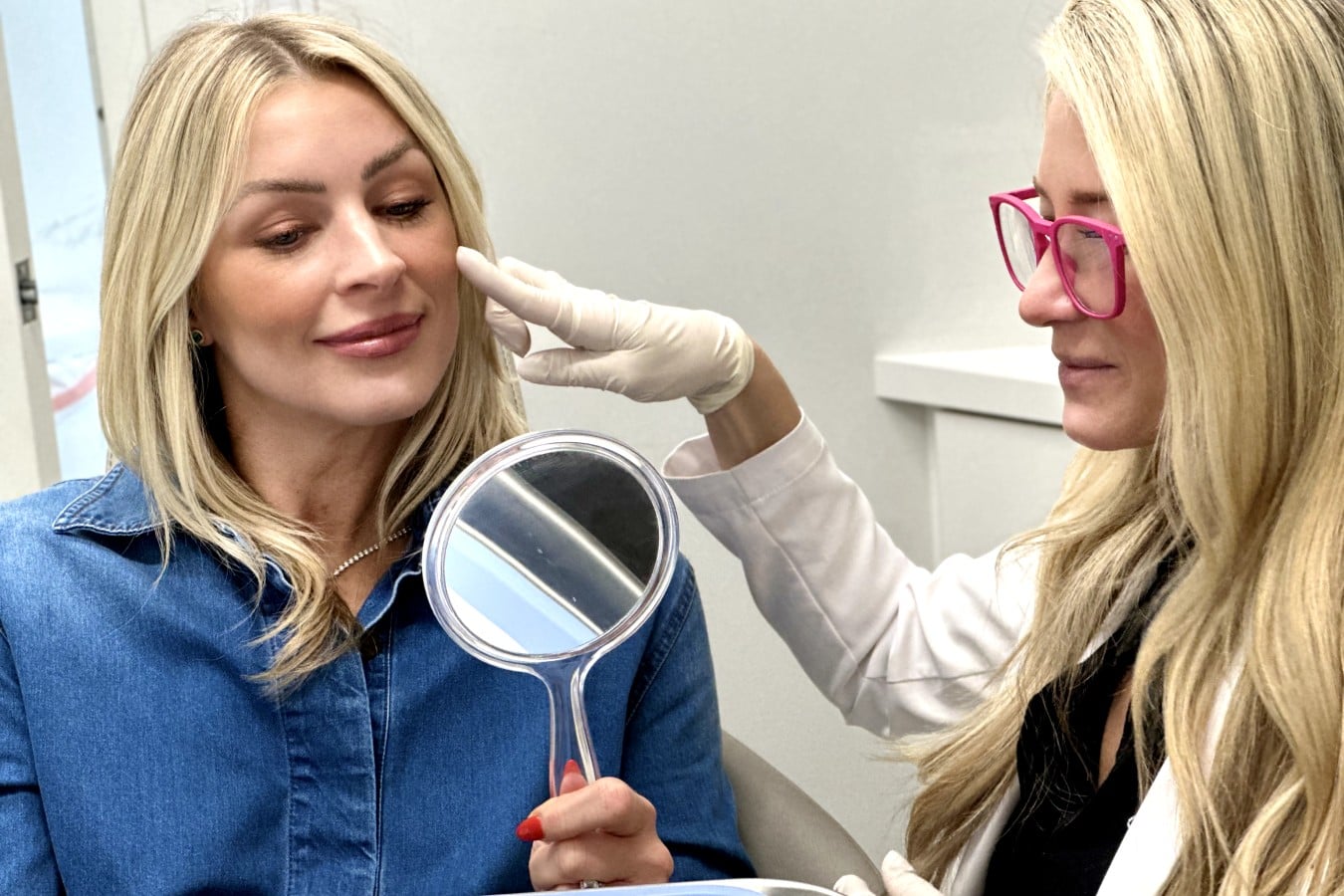

Teeth Whitening
Zoom Whitening
Zoom whitening is one of the most popular teeth whitening treatments available today. Zoom whitening is an in-office treatment that uses a powerful bleaching gel and special light to quickly and effectively give you a brighter and whiter smile. This combination works synergistically to penetrate deep into the enamel surface, effectively eradicating stubborn stains and discoloration that daily brushing cannot reach.
The power of Zoom Whitening lies in its ability to deliver dramatic results in a single session. Within the span of a single appointment, you’ll be able to notice a significant enhancement in the brightness of your smile. Yet, despite its excellent whitening capabilities, the process is designed to be gentle on your teeth, ensuring minimal discomfort and sensitivity.
At Otto Orthodontics, our team of experienced professionals oversees each step of the procedure, ensuring safety and satisfactory results. If you are looking for a quick and easy way to achieve a brighter, more beautiful smile, zoom whitening may be the perfect solution for you. Contact one of our offices today to request a consultation with our experienced team members.
At-home whitening pens
Whitening pens are a popular at-home treatment for those looking to achieve brighter teeth. The pens contain a whitening gel that is applied directly to the teeth. The gel helps to break down stains and discoloration, revealing a brighter smile. Whitening pens are a convenient and easy way to achieve noticeable results in a short amount of time. Most pens can be used in just minutes per day, making them a great option for busy individuals. Pens are also relatively affordable, making them a great choice for budget-conscious individuals. When used as directed, whitening pens are safe and effective,
Shop our options for whitening pens online, or stop by our office today. We offer single and 3 packs of our whitening pens for you to choose from.
How To Use
Our compact and portable whitening pen makes it effortless to whiten your teeth at home or on the go. The no-mess brush applicator lets you paint the gel directly onto your teeth. Simply twist the bottom of the pen to expose the whitening gel and paint onto each tooth to whiten. Whitener can be used in bleaching trays or retainers, but can also be used with just cheek retractors! The innovative clear tube design allows you to see exactly how much whitening gel is being used and is left in the pen. The whitening gel is thick to prevent leakage and the pen device uses a strong twisting mechanism to push the gel through the brush tip for each use.
Contains 35% Carbamide Peroxide whitening gel to break down and remove stains on the surface of the teeth from coffee, wine, soda, tea, smoking, and more! Each pen includes 15+ whitening treatments. The gel is made in the USA and is gluten-free, kosher, and safe for enamel.
Here’s how to use the whitening pen:
- Floss and brush your teeth.
- Remove the cap and twist the pen (a few clicks at a time to avoid using too much gel) to dispense gel onto the brush.
- Brush a thin layer of gel onto the front part of your teeth that are visible when you smile, but do not apply gel to your gums.
- Place whitening trays (or clear retainers or clear aligners) on your teeth over the gel. If you do not have whitening trays, keep your mouth open and lips away from the gel using cheek retractors to allow the gel to take effect without your saliva rinsing it away.
- Leave the gel on for 10-30 minutes. Leaving the gel on for longer will result in additional whitening, but may also increase sensitivity. Avoid any contact of the gel with soft tissue (tongue, gums, and lips) and spit out any excess.
- Remove your trays and rinse the gel away from your teeth and trays with room temperature water.
- Do not drink, smoke, or eat for at least 1-2 hours after use for optimal results.
Repeat up to twice a day to achieve desired results. Sensitivity is common and not abnormal following whitening. Decrease the frequency of whitening if you experience sensitivity. Store the whitening pen in a cool, dry area with the cap on.
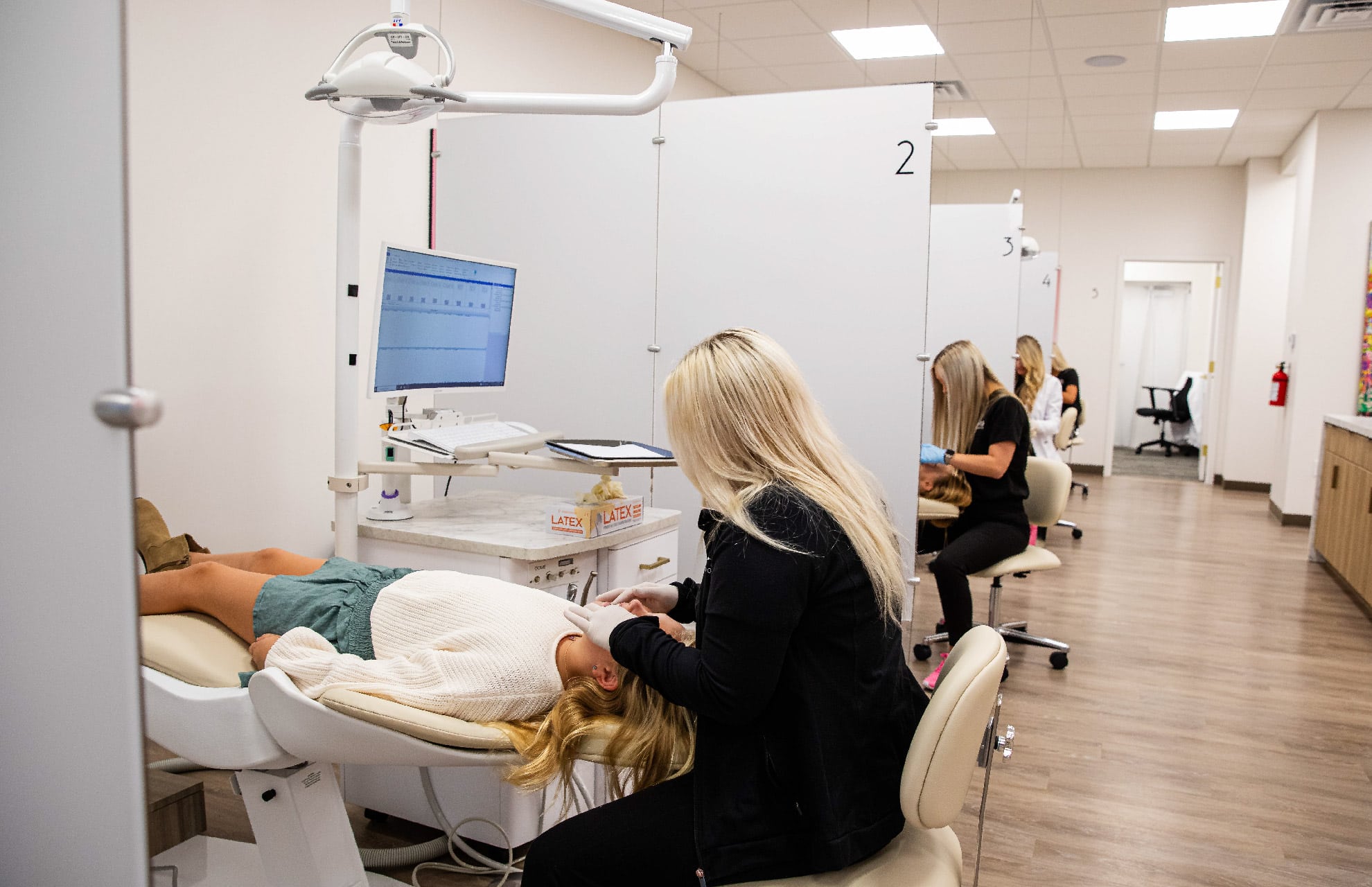
Common Appliances
Orthodontic appliances are integral to the treatments we offer, and understanding them can give you a full picture of the treatment process. Each patient’s needs are unique, and each of these appliances allows us to customize treatment plans to fit any case. Our experienced team at Otto Orthodontics is ready to answer any questions you may have as we work together toward your perfect smile! Check out some of the most common appliances we use in our treatments.
Elastics (Rubber Bands)
Wearing elastics (or rubber bands) improves the fit of your upper and lower teeth. Wear rubber bands as instructed and remember that the rubber bands work far more efficiently if they’re worn as prescribed.
Headgear
Headgear is used to treat patients whose teeth are in an “overbite,” with the upper jaw forward of the lower jaw, or an “underbite” with the lower jaw forward of the upper jaw. Headgear gently “pulls” on your teeth to restrict further forward growth of your upper teeth and jaw.
Herbst Appliance
The Herbst appliance reduces overbite by encouraging the lower jaw forward and the upper molars backward. This fixed appliance is used mostly for younger, growing children and is worn for about 12-15 months.
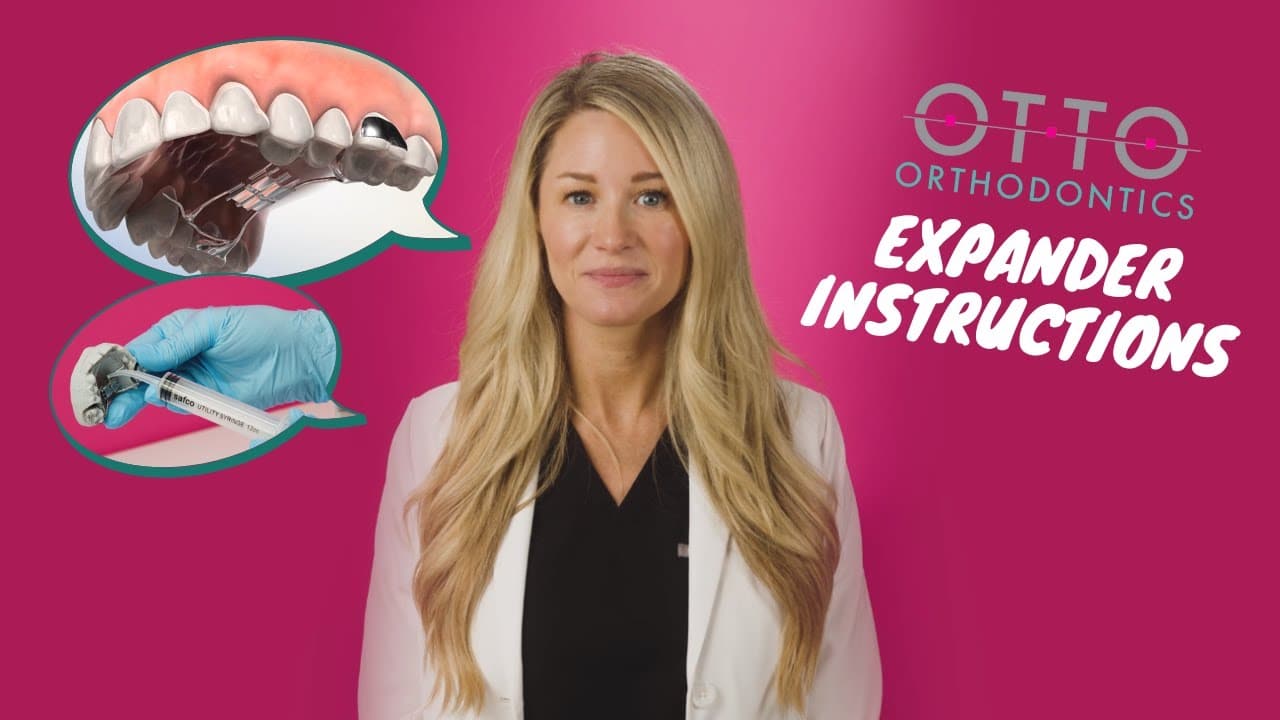
Palatal Expander
Putting gentle pressure on your upper molars each time an adjustment is made the palatal expander “expands” (or widens) your upper jaw. Dr. Otto explains when and how to adjust your expander. Once the desired expansion is achieved, the patient will wear the appliance for several months to solidify the expansion and to prevent regression.
Retainers
Retainers may be removable or fixed. They hold your teeth in their new, correct positions after your teeth have been straightened. Your orthodontist will instruct you on how to care for your retainer and about the duration of the wear. Wearing your retainer as directed is crucial to prevent regression of your treatment.
Separators Or Spacers
Separators are little rubber doughnuts that may be placed between your teeth to push them apart so that orthodontic bands may be placed during your next appointment. The separators will be removed before we place the bands. Separators do not mix well with sticky foods, toothpicks, or floss.
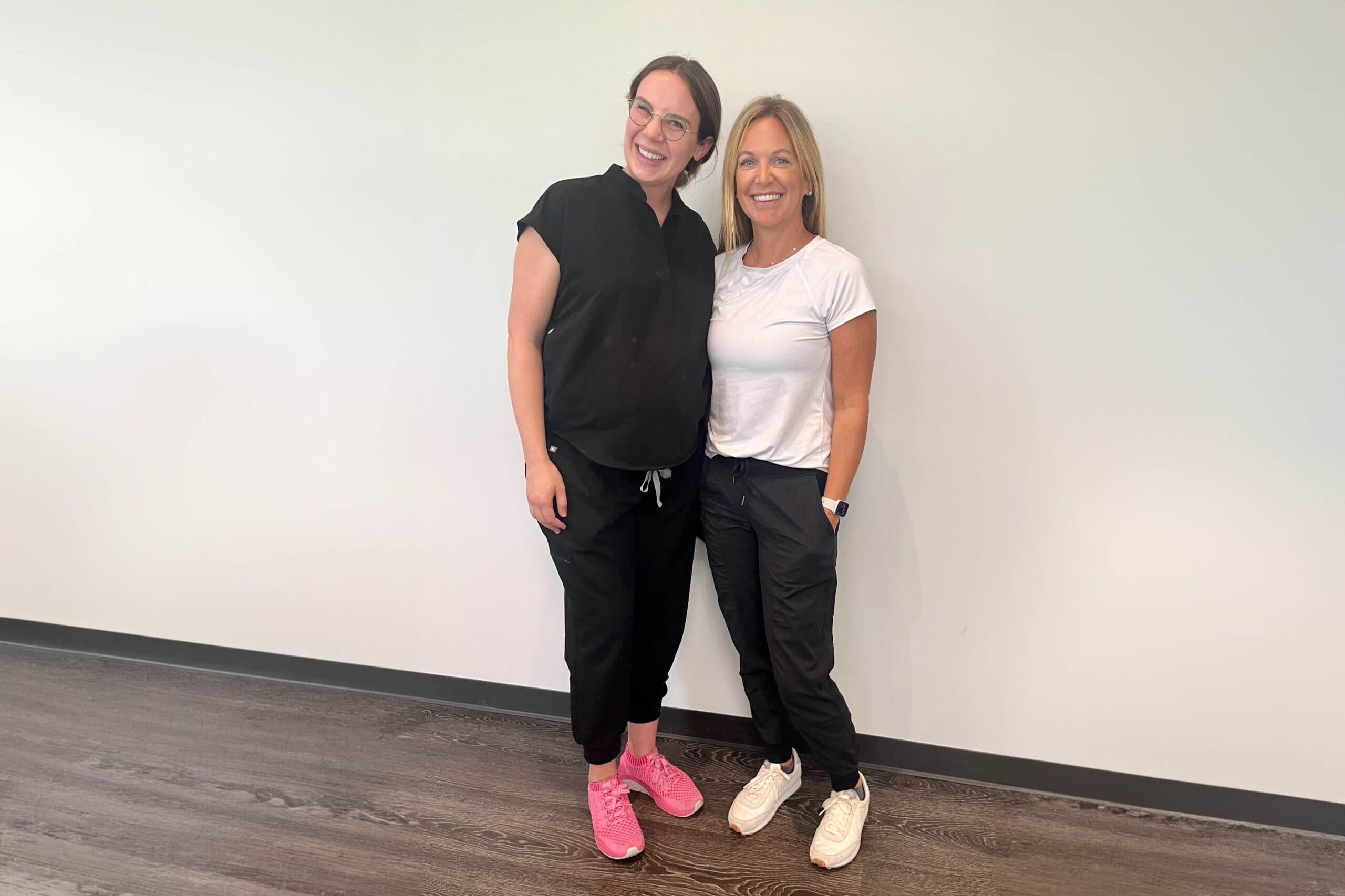
Orthodontic Retention
Finally, your braces have been removed and your smile is beautiful, straight, and best of all, no more braces or aligners! However, your orthodontic journey isn’t quite completed. To keep your smile looking its best, you’ll have to wear a retainer to preserve and stabilize your results. Retainers are needed to control or limit potential changes in tooth position. They are used after treatment to hold teeth in their correct alignment while the surrounding gums, bone, and muscles adjust to the new positioning of your teeth.
Types of Retainers
Retainers are always custom-made and can be removable or fixed.
- Traditional removable retainers typically include a metal wire that surrounds the front teeth and is attached to an acrylic arch that sits on the roof of the mouth. The metal wires can be adjusted to finish treatment and continue minor movement of the front teeth as needed.
- Aligner-style retainers, or Essix retainers, look similar to clear aligners and offer a more aesthetic alternative to wire retainers. This clear retainer may fit over the entire arch of your teeth, or only from canine to canine (clip-on retainer). It is produced from a mold of your newly aligned teeth.
- Fixed retainers consist of wires bonded behind the bottom and/or top teeth. While the device is usually required no more than a year after wisdom teeth have been extracted, it is often kept in place for life.
Pros & Cons Of Each
- Removable retainers can be taken out for eating and hygiene routines.
- Removable retainers can get lost easily, so remember to keep yours in the case whenever you remove it to eat or brush.
- A fixed retainer is great if you don’t want to keep track of it, or if you don’t want to worry about how many hours per day it must be worn.
- Teeth with fixed retainers require a little extra attention to remove tartar while flossing. Patients with fixed retainers often must use floss threaders to pass dental floss through the small spaces between the retainer and the teeth.
Retainer Instructions
- Always bring your retainers to your appointments.
- If you have any questions or concerns about your retainers, or if your retainers need adjusting, call us. Do not try to adjust them yourself.
- Initially, you may find it difficult to speak. Practice speaking, reading, or singing out loud to get used to them faster.
- Wear your retainers full time, until the doctor instructs otherwise.
Care & Cleaning
- Clean retainers thoroughly once a day with a toothbrush and toothpaste. Use warm but not hot water. Brushing retainers removes the plaque, and eliminates odors.
- Efferdent or other orthodontic appliance cleaners can be used, but do not take the place of brushing.
- Retainers are breakable, so treat them with care. If retainers are lost or broken call us immediately
A Few Helpful Warnings
- Take your retainers out when eating, and always put retainers in their case!
- Beware! Most appliances are lost in school lunchrooms or restaurants.
- When retainers are not in your mouth they should ALWAYS be in a retainer case. Pets love to chew on them!
- Remove retainers when swimming.
- Keep retainers away from hot water, hot car dashboards, pockets, washing machines, and napkins.
- Retainer replacement can be expensive; with proper care, they will last for years!
Current Pricing
-
In-Office Zoom Professional Whitening $498
-
5-Pack Glo Whitening Refill Vials $86
-
Botox $11/Unit
-
Whitening Pens (3) $40
-
Single Whitening Pen $15
-
PlaqueHD Toothpaste $20
-
Cheek Retractor $5

